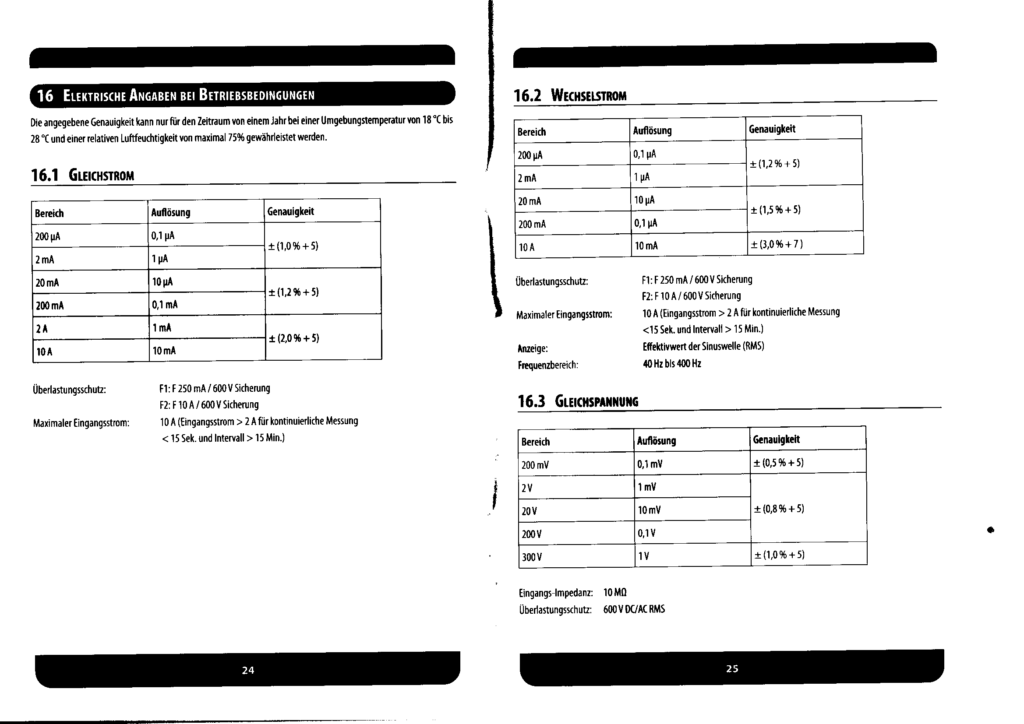When doing electronics stuff, I often find myself in need of two multimeters. Usually, it’s when I need to measure both the voltage and the current of a circuit or power supply. For the past 2+ years, I’ve been using a PCWork PCW02A multimeter (also sold as the KAIWEETS HT118A), an incredibly fully-featured multimeter for only 30eur new. However, because it has a large display and many features, it’s also large and bulky. I needed an additional small and light multimeter that could still measure voltage, resistance, and current, but I always left the purchase as “I’ll find one someday”. Well, while I was shopping at Aldi, I found it.
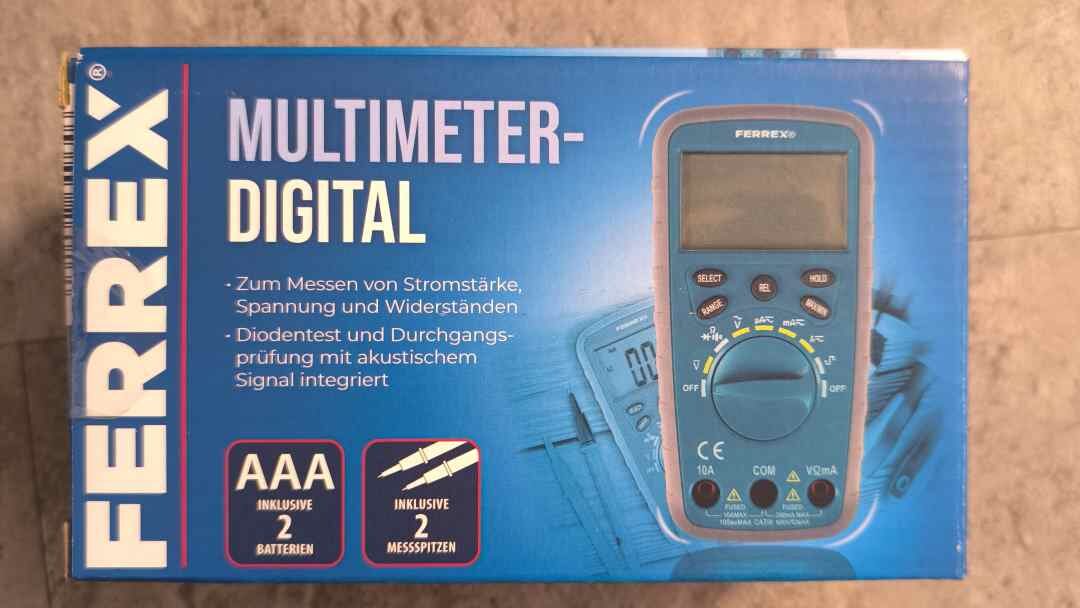
For 10eur, I didn’t think twice, especially because it had auto-ranging. The Aldi multimeter (model ANS-24-146) had all the basic features, plus:
- Diode test
- Continuity test
- Auto-ranging for voltage, resistance, and current
- Mysterious option
This will be my short review of it.
Basic electrical characteristics
First, these are the specifications it comes with (also see bottom for scans of the datasheet with tolerances):
- DC Voltage: 0.1 mV–600 V
- DC Current: 1 μA–10 A
- AC Voltage (RMS!): 1 mV–600 V
- AC Current: 0.1 μA–10 A
- Resistance: 0,1 Ω–20 MΩ
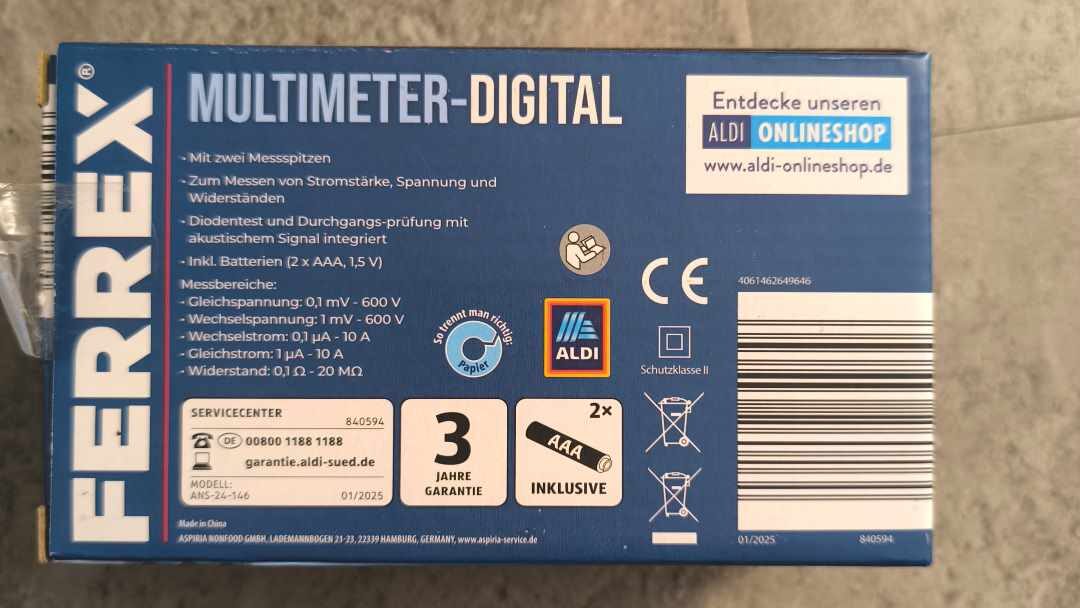
Resistance measurement
Measuring 10Ω±1% and 1MΩ±1% resistors (which were marginal, thus sold for very little) showed that the multimeter did correctly measure them. I compared the results to my other, more accurate multimeter and verified them. With very low and very high resistances, the auto-ranging takes much longer to settle. See photos for measurements:
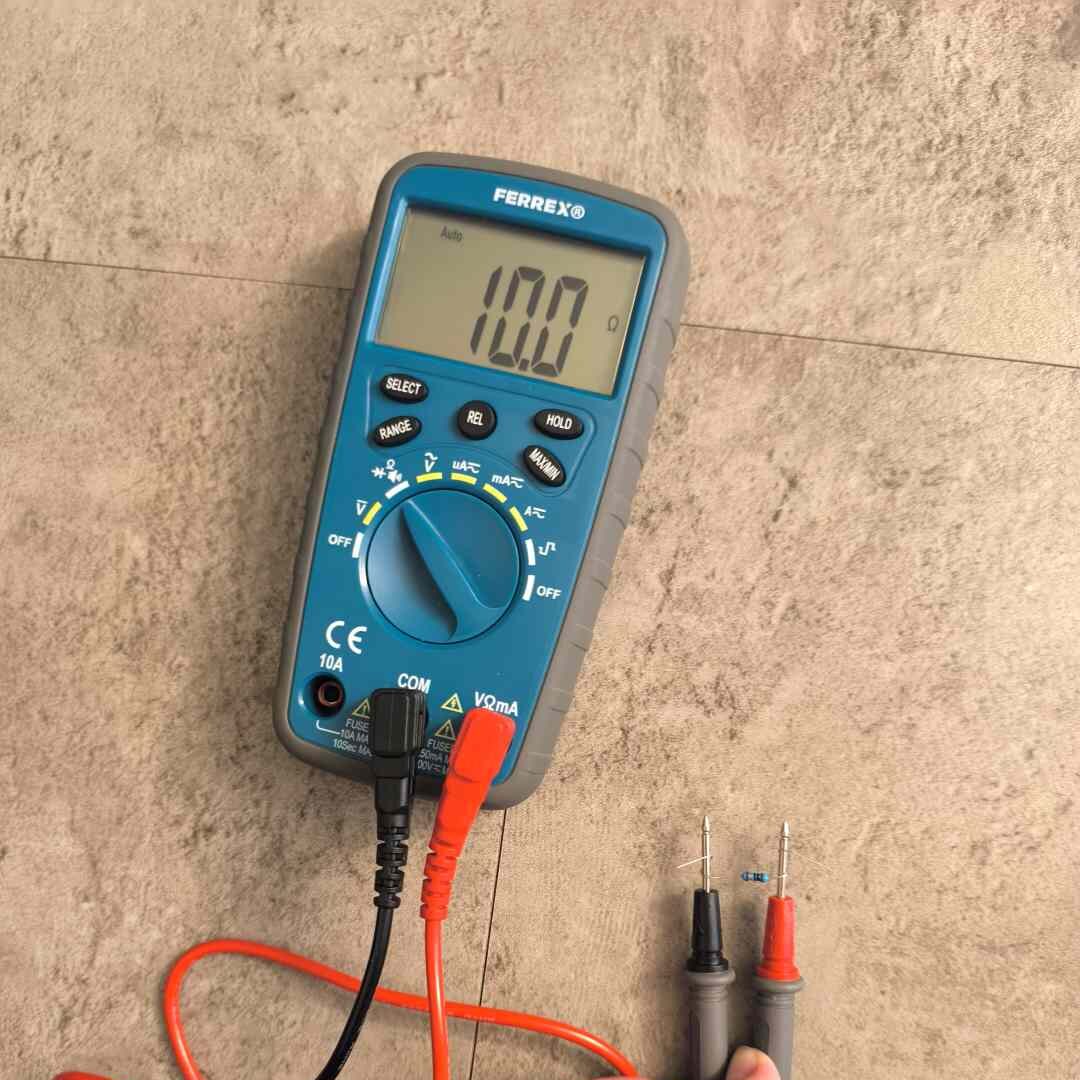
Current measurement
Measuring current (no photos because I don’t have enough hands) showed similar accuracy.
Voltage measurement
Measuring a wall outlet and a battery also resulted in an accurate voltage.
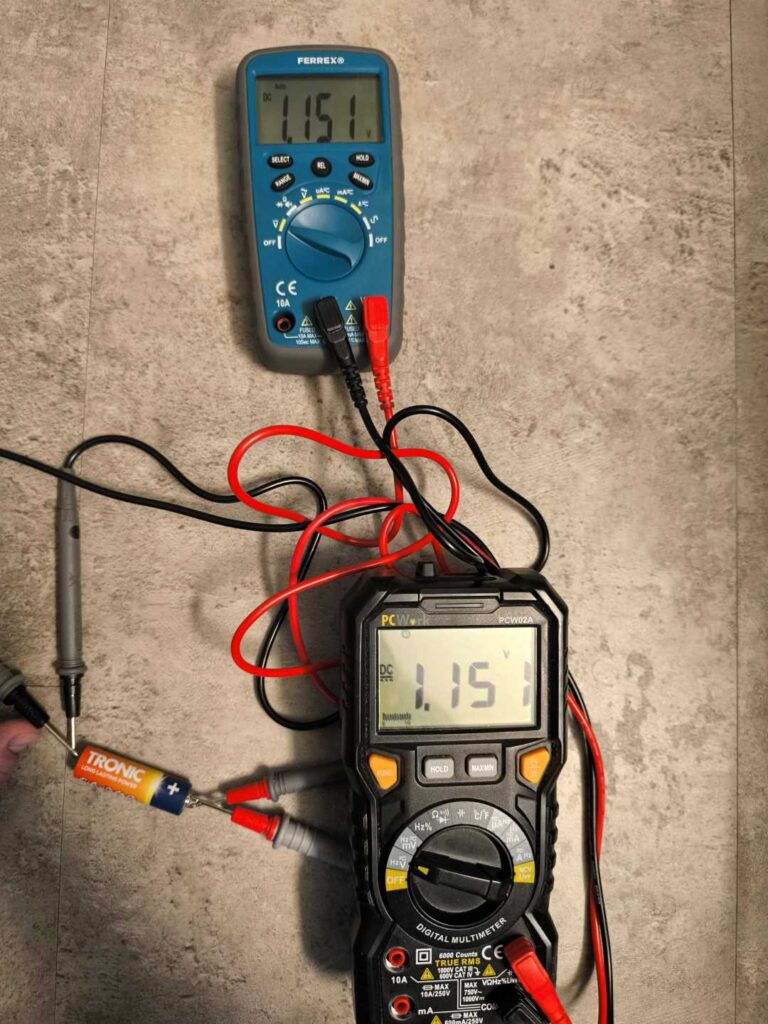
Additional features and observations
Diode and continuity
The diode and continuity tests are relatively fast at ~1-1.5s. The multimeter considers anything below 25Ω a short circuit, which is reasonable. For this purpose, the multimeter is pretty good. The diode test voltage is 2.188V, which is enough for all regular diodes but won’t work with most Zener diodes. It will work with power supply 1.24-1.25V references, however!
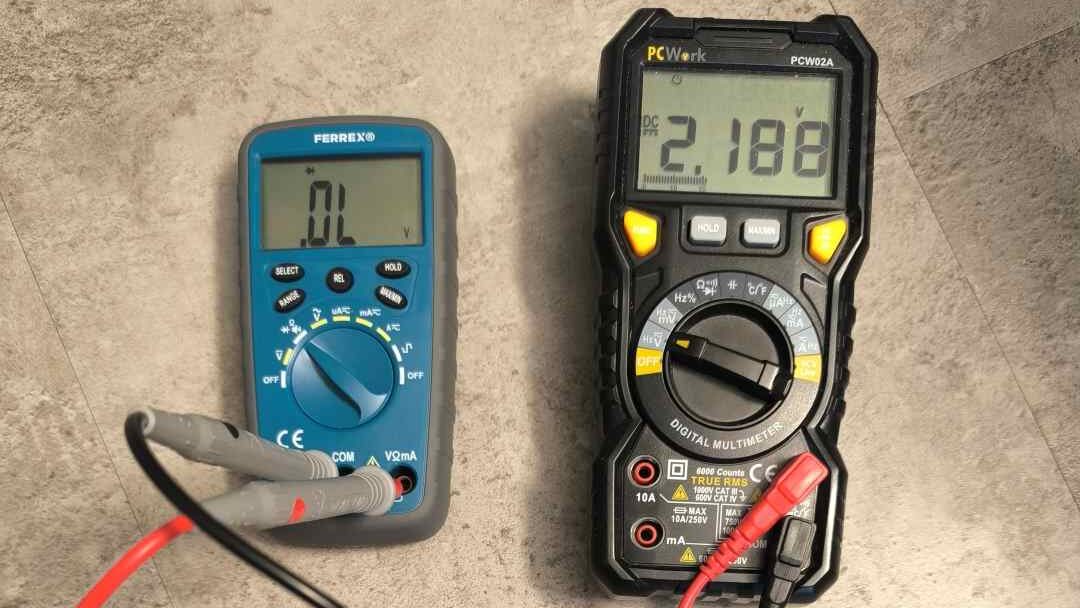
Auto-ranging
The auto-ranging feature is pretty good, but it’s quite slow. I’d still prefer it over manual ranging, but it’s definitely not as good at auto-ranging as even the PCWork. However, the multimeter does come with a manual range button, which is a very nice feature.
One annoying thing is that when it’s set to auto-ranging, the multimeter’s display goes wild with measurements and jumps wildly. This is distracting.
Relative measurement/delta
The delta measurement is surprisingly cool and useful. I’ve had situations where I’ve needed something like it and have never had a multimeter with it.
Waveform generator
The second-to-last option is a waveform generator, which has a 1.414V DC offset and measures at 1.5VAC. It’s rated at 1KHz but measured slightly higher. I could imagine this being extremely useful for audio circuits, especially since it has a 10KΩ output impedance, which is in the order of magnitude of an audio input.
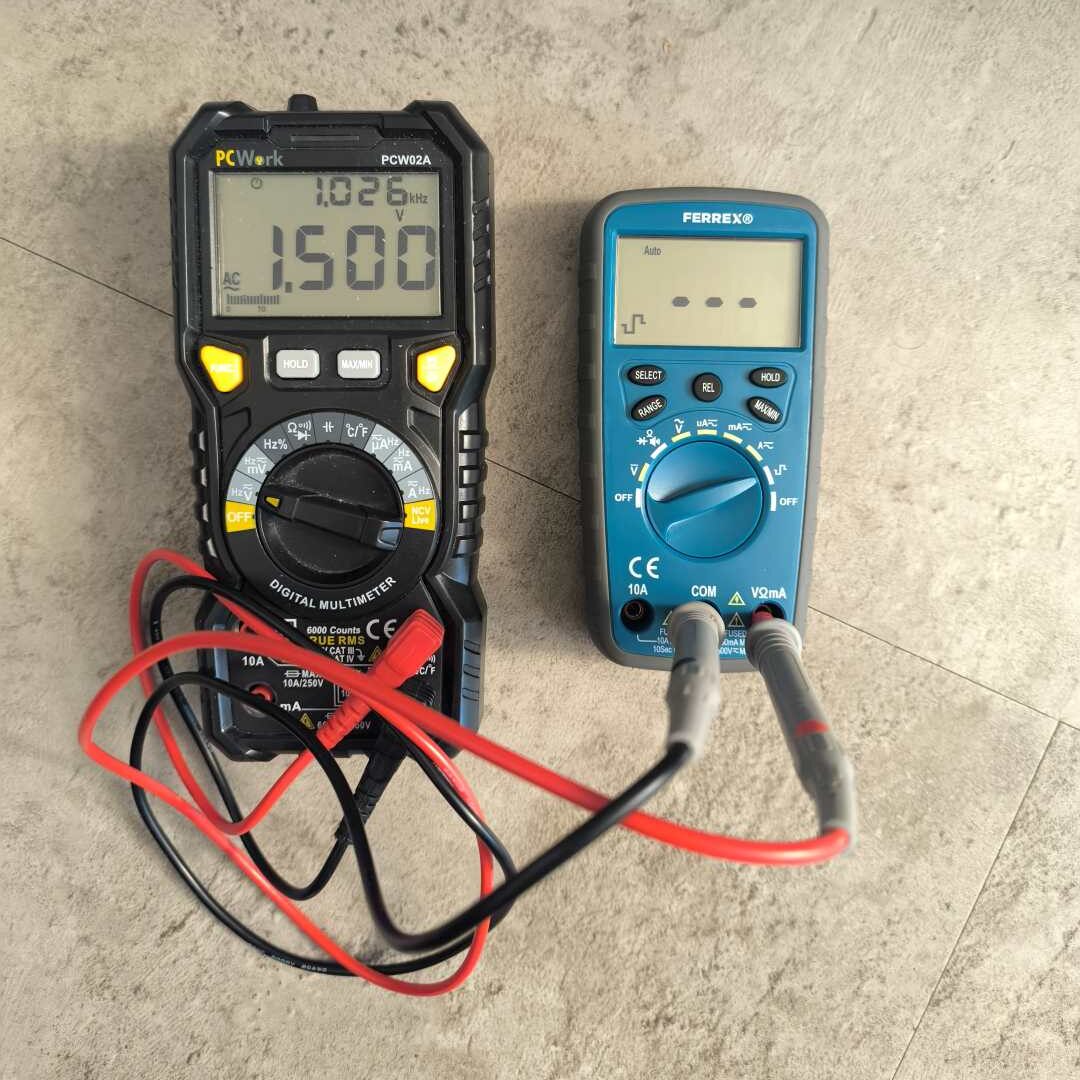
Build quality
The case
- The casing feels light but not too flimsy. It doesn’t have protective rubber around it, but it doesn’t feel like it would shatter from the first fall, either.
- The battery compartment cover doesn’t seem like it would survive many replacements or openings.
- The stand is pretty good.
- The connector for the leads feels flimsy, and it’s relatively easy to pull out the leads, but they don’t fall out on their own, which is good.
The leads
The leads are CAT III (600V max) and are serviceable. When measuring the mains voltage, they felt very slippery, which is exactly what you don’t want when measuring mains voltage. I’d keep this multimeter and leads only for low voltages. Additionally, the leads don’t have the rim before the metal part to protect your fingers, which is risky when measuring mains/high voltages.
Other
- The multimeter is fused (10A, 250mA, both 600V), which is excellent.
- The display has decent viewing angles.
- The multimeter takes 2 AAA batteries, which is much better than other cheap multimeters that use 9V batteries.
- I don’t like that the mA range is combined with voltage/resistance/diode/continuity, but that’s normal for cheap multimeters. Generally, like with the PCWork, having the current completely separate from all other functionality is preferred.
Conclusion
For my purposes, this is a great little multimeter. It’s light, portable, auto-ranging, and has a decent stand. However, it has drawbacks that would make it a bad starter multimeter or main multimeter. I’d recommend it either for people who very rarely need a multimeter, and maybe only need to measure if a battery is dead or a lamp is shorted, or for people on a budget who need a backup/auxiliary multimeter.
Datasheet specs:
